 W
WIcelandic cuisine, the cuisine of Iceland, has a long history. Important parts of Icelandic cuisine are lamb, dairy, and fish, the latter due to the fact that Iceland has traditionally been inhabited only near its coastline. Popular foods in Iceland include skyr, hangikjöt, kleinur, laufabrauð, and bollur. Þorramatur is a traditional buffet served at midwinter festivals called Þorrablót; it includes a selection of traditionally cured meat and fish products served with rúgbrauð and brennivín. The flavors of this traditional country food originate in its preservation methods; pickling in fermented whey or brine, drying, and smoking.
 W
WBæjarins Beztu Pylsur is a small chain of hot dog stands located in Reykjavík, Iceland.
 W
WDried and salted cod, sometimes referred to as salt cod or saltfish or salt dolly, is cod which has been preserved by drying after salting. Cod which has been dried without the addition of salt is stockfish. Salt cod was long a major export of the North Atlantic region, and has become an ingredient of many cuisines around the Atlantic and in the Mediterranean.
 W
WFish balls are rounded meat balls made from fish paste which are then boiled or deep fried. Similar in composition to fishcake, fish balls are often made from fish mince or surimi, salt, and a culinary binder such as tapioca flour, corn, or potato starch.
 W
WGravlax or graved salmon is a Nordic dish consisting of salmon that is cured using a mix of salt and sugar, and either dill or sprucetwigs placed on top, and may occasionally be cold-smoked afterwards. Gravlax is usually served as an appetizer, sliced thinly and accompanied by hovmästarsås, a dill and mustard sauce, either on bread or with boiled potatoes.
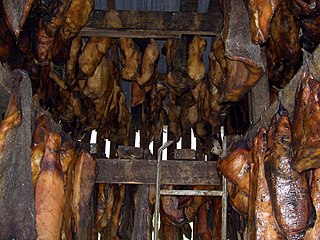 W
WHákarl is a national dish of Iceland consisting of a Greenland shark or other sleeper shark that has been cured with a particular fermentation process and hung to dry for four to five months. It has a strong ammonia-rich smell and fishy taste, making hákarl an acquired taste.
 W
WHangikjöt is a traditional festive food in Iceland, served at Christmas.
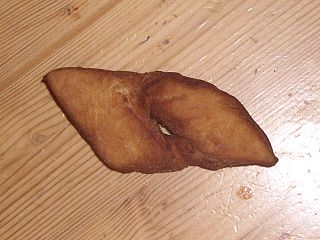 W
WKlenät, kleinur, klena, klejne, kleina, kleyna, and fattigmann are all names for Angel wings, a fried pastry common in the Nordic countries as well as the rest of Europe and the United States. In nearby countries and Eastern European countries. The name is related to klen, the Swedish term for "slender", but is originally of Low German origin, which may indicate that the pastry was originally German. It is made from flattened dough cut into small trapezoids. A slit is cut in the middle and then one or both ends pulled through the slit to form a "knot". The kleina is then deep-fried in oil or another kind of fat. Subsequently can be sprinkled with powdered sugar and cinnamon.
 W
WLaufabrauð is a traditional kind of Icelandic bread that is most often eaten in the Christmas season. Originating from northern Iceland but now eaten throughout the country, it consists of round, very thin flat cakes with a diameter of about 15 to 20 cm, decorated with leaf-like, geometric patterns and fried briefly in hot fat or oil.
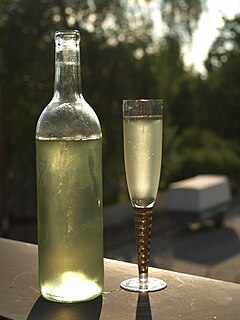 W
WMead is an alcoholic beverage created by fermenting honey with water, sometimes with various fruits, spices, grains, or hops. The alcoholic content ranges from about 3.5% ABV to more than 18%. The defining characteristic of mead is that the majority of the beverage's fermentable sugar is derived from honey. It may be still, carbonated, or naturally sparkling; dry, semi-sweet, or sweet.
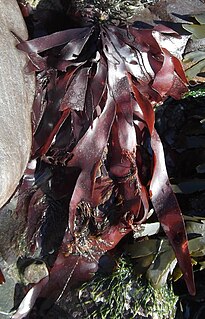 W
WPalmaria palmata, also called dulse, dillisk or dilsk, red dulse, sea lettuce flakes, or creathnach, is a red alga (Rhodophyta) previously referred to as Rhodymenia palmata. It grows on the northern coasts of the Atlantic and Pacific Oceans. It is a well-known snack food. In Iceland, where it is known as söl [ˈsœːl̥], it has been an important source of dietary fiber throughout the centuries.
 W
WPrawn soup, also referred to as shrimp soup, is a soup dish prepared using freshwater or saltwater prawns as a primary ingredient. Several varieties of the dish exist in various areas of the world, including Penang Prawn Mee in Malaysia, Peruvian chupe de camarones, Thai kaeng som kung and Mexican caldo de camarones, among others. Prawn and shrimp soup can be prepared as a broth- or stock-based soup, as a cream-based soup, or as a chowder. In the United States, cream of shrimp soup is mass-produced and distributed canned or frozen.
 W
WSeal meat is the flesh, including the blubber and organs, of seals used as food for humans or other animals. It is prepared in numerous ways, often being hung and dried before consumption. Historically, it has been eaten in many parts of the world, both as a part of a normal diet, and as sustenance.
 W
WSkyr is an Icelandic cultured dairy product. It has the consistency of strained yogurt, but a milder flavor. Skyr can be classified as a fresh sour milk cheese but is consumed like a yogurt. It has been a part of Icelandic cuisine for centuries.
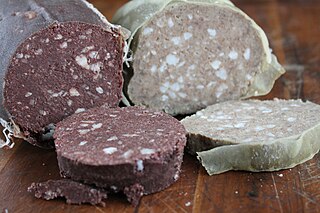 W
WSlátur is an Icelandic food made from the innards of sheep. There are two types of slátur; blóðmör (Icelandic) or "blood pudding" and lifrarpylsa. The first is similar to Irish and British black pudding, although it does not contain the spices used in British and Irish cuisine. They are also much smoother in texture.
 W
WSmörgåstårta is a dish of Swedish origin popular in Sweden, Estonia, Finland and Iceland. It is a savoury cake that is similar to a sandwich, but with large amounts of filling and garnish, similar to a layered cream cake.
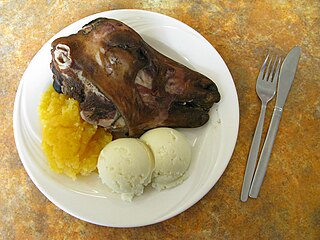 W
WSvið is a traditional Icelandic dish consisting of a sheep's head cut in half, singed to remove the fur, and boiled with the brain removed, sometimes cured in lactic acid.
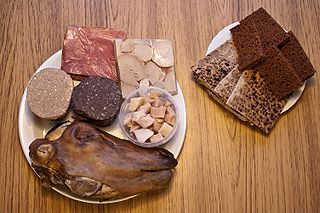 W
WÞorramatur is a selection of traditional Icelandic food, consisting mainly of meat and fish products cured in a traditional manner, cut into slices or pieces and served with rúgbrauð, butter and brennivín. Þorramatur is consumed during the Nordic month of Þorri (Thorri), in January and February, particularly at the mid-winter feast of Þorrablót (Thorrablot) as a tribute to old culture. Being thus connected with the tradition of Þorrablót festivals, Þorramatur is most often served as a buffet.
 W
WVínarterta, also known as Randalín, is a multi-layered cake made from alternating layers of almond and/or cardamom-flavoured biscuit and plum jam, the jam usually including spices such as cinnamon, vanilla, cloves, and cardamom. Other fillings such as apricot and rhubarb are less well known, but traditional going back to the 19th century. Vinarterta originated in Iceland, but its name and composition both hint at Austrian roots. The recipe was brought to Manitoba by Icelandic immigrants to Canada, many of whom settled at New Iceland.
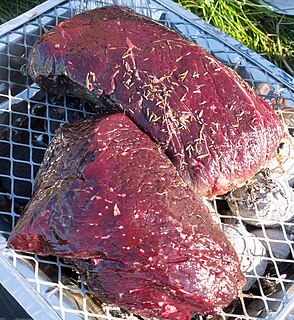 W
WWhale meat, broadly speaking, may include all cetaceans and all parts of the animal: muscle (meat), organs (offal), skin (muktuk), and fat (blubber). There is relatively little demand for whale meat, compared to farmed livestock. Commercial whaling, which has faced opposition for decades, continues today in very few countries, despite whale meat being eaten across Western Europe and colonial America previously. However, in areas where dolphin drive hunting and aboriginal whaling exist, marine mammals are eaten locally as part of a subsistence economy: the Faroe Islands, the circumpolar Arctic, other indigenous peoples of the United States, St. Vincent and the Grenadines, some of villages in Indonesia and in certain South Pacific islands.